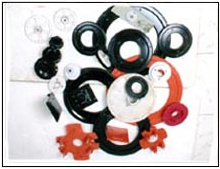Variac Spare Parts
Variac Spare Parts Specification
- Voltage Booster Type
- Manual or Motorized
- Dimension (L*W*H)
- Custom size as per variac design
- Coil Material
- Copper / Aluminum
- Rated Voltage
- 110V, 230V, 415V AC
- Low Voltage
- Down to 0V (for variable output parts)
- High Voltage
- Up to 1000V as per part usage
- Capacity
- Based on variac transformer rating
- Cooling Type
- Air Cooled
- Load Loss
- Low, dependent on load and copper winding
- Product Type
- Variac Spare Parts
- Material
- Copper, Bakelite, Steel, Brass, Fiber
- Output
- As per variac design
- Efficiency
- High efficiency for conductive parts
- Phase
- Single Phase & Three Phase
- Coil Structure
- Toroidal / Cylindrical
- Coil Number
- Single or Multiple as per application
- Power Scope
- As per variac rating (0.5 kVA to 100 kVA)
- Weight
- Varies with part and rating (from 100g to 5kg)
Variac Spare Parts Trade Information
- Minimum Order Quantity
- 10 Units
- Payment Terms
- Cash Advance (CA), Cash in Advance (CID), Cheque
- Supply Ability
- Unit
- Delivery Time
- 7 Days
- Sample Available
- Yes
- Sample Policy
- Sample costs shipping and taxes has to be paid by the buyer
- Main Export Market(s)
- Australia, North America, Eastern Europe, Middle East, Africa, Central America, South America, Western Europe, Asia
- Main Domestic Market
- All India
About Variac Spare Parts
Variac Spare Parts
Our Variac Spare Parts are developed in our fully furnished infrastructure using quality proven raw materials that are collected from the authentic vendors. Our Variac Spare Parts are in accordance to the defined quality parameters and acclaimed by clients for their superior & noise less performance, durable finish standards, corrosion resistance and longer life.
Optimized for Versatile Installation
Variac spare parts are engineered to accommodate both panel and chassis mounting types. The design flexibility enables seamless integration into various control panels and equipment layouts, ensuring suitability for both new installations and system upgrades. This versatility enhances adaptability across a wide spectrum of industrial and commercial applications.
Designed for High Performance and Longevity
Each part is crafted from high-quality materials such as copper, steel, brass, and bakelite, ensuring high efficiency and durability under demanding conditions. With advanced contact types and superior insulation, these spares maintain optimal performance and reliability, reducing downtime and maintenance needs in critical electrical systems.
Compliance with International Standards
Manufactured to comply with IS and IEC standards, these spare parts adhere to strict quality control protocols. Their nickel-plated or powder-coated surfaces provide additional resistance against corrosion, ensuring long-lasting service life even in challenging environments. This strict compliance supports safe, stable, and efficient electrical operations.
FAQs of Variac Spare Parts:
Q: How are Variac spare parts installed in electrical systems?
A: Variac spare parts are typically designed for easy integration into panel or chassis mountings, allowing for quick and secure installation within variac-based control systems and transformers. Each part is manufactured to fit custom dimensions as per variac design, ensuring seamless compatibility with both new and existing systems.Q: What types of contact materials are available for these spare parts?
A: The Variac spare parts utilize contact types such as carbon or graphite brushes, selected for their superior conductivity and durability. These materials help maintain stable connections and efficient current transfer within the variac, supporting both manual and motorized voltage booster types.Q: When should I consider replacing my Variac spare parts?
A: It is advisable to replace Variac spare parts when you observe signs of wear, inconsistent voltage output, or increased load loss during operation. Utilizing genuine new parts that conform to IS and IEC standards ensures the continued efficiency and longevity of your variac system.Q: Where can I source Variac spare parts in India?
A: Variac spare parts manufactured to high standards are available from top suppliers and manufacturers across India. They offer components suitable for various voltage and kVA ratings, supporting both single- and three-phase applications.Q: What is the process for choosing the right Variac spare part?
A: Selecting the appropriate variac spare part involves reviewing your systems power rating, coil structure (toroidal or cylindrical), voltage requirements, and dimensions. Its important to match these specifications to ensure optimal fit and performance in your application. Consulting with manufacturers or suppliers can help in identifying the exact part needed.Q: How are Variac spare parts typically used in practice?
A: These spare parts are integral to maintaining voltage regulation in variac transformers, supporting functions such as adjustable output voltage, reduction of load loss, and efficient cooling with air-cooled designs. They serve crucial roles in laboratories, industrial machines, educational apparatus, and electrical testing setups.Q: What benefits do high-efficiency conductive parts bring to Variac transformers?
A: High-efficiency conductive elements, such as precision copper windings and quality brush contacts, minimize electrical losses, enhance overall transformer performance, and ensure stable voltage delivery. This translates to lower operational costs, improved equipment uptime, and greater reliability in demanding applications.
Tell us about your requirement

Price:
Quantity
Select Unit
- 50
- 100
- 200
- 250
- 500
- 1000+
Additional detail
Mobile number
Email
GST : 07AFYPR9761E1ZK
11/10, Lower Ground, New Rashid Market, Krishna Nagar, Street No-6, Delhi - 110051, India
Phone :07971190956
Mr. P. R. Jaiswal
(Proprietor )
Mobile :07971190956
Mr. P. N. Jaiswal
Mobile :07971190956
|
 |
VISHAL ENGINEERING WORKS
All Rights Reserved.(Terms of Use) Developed and Managed by Infocom Network Private Limited. |


 Send Inquiry
Send Inquiry

